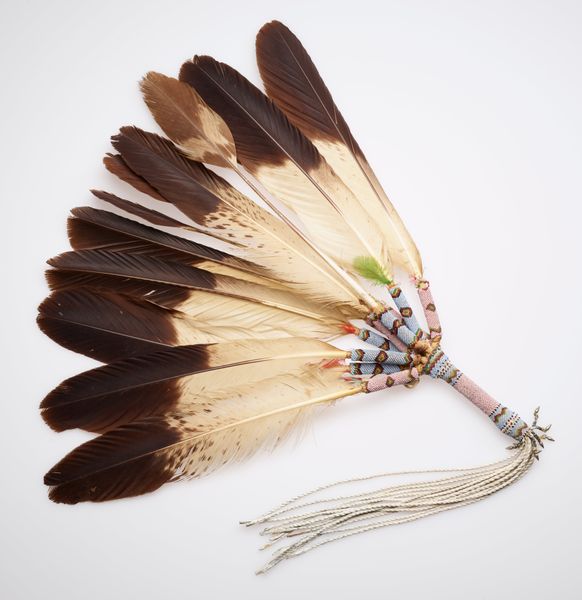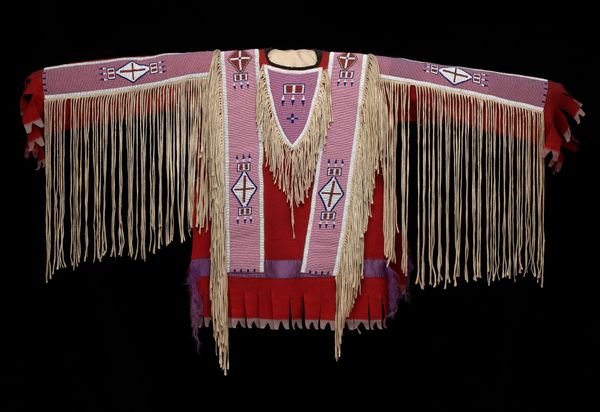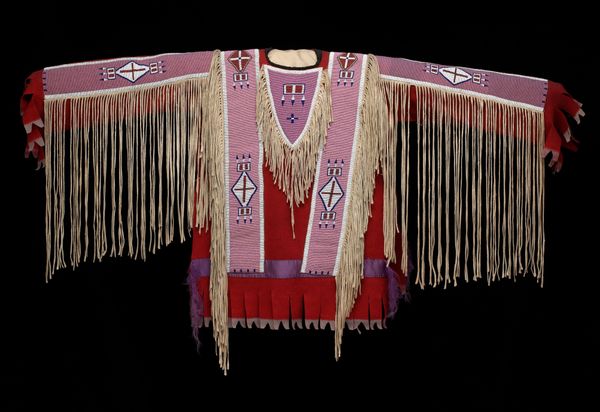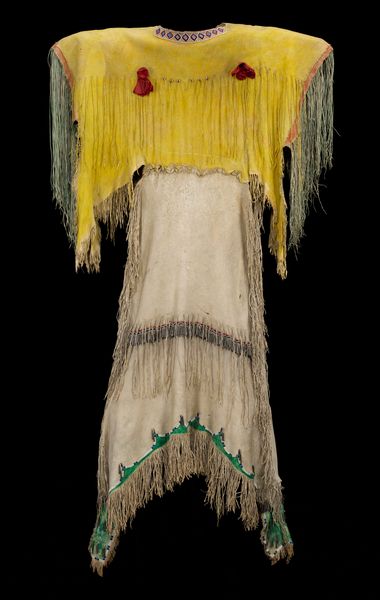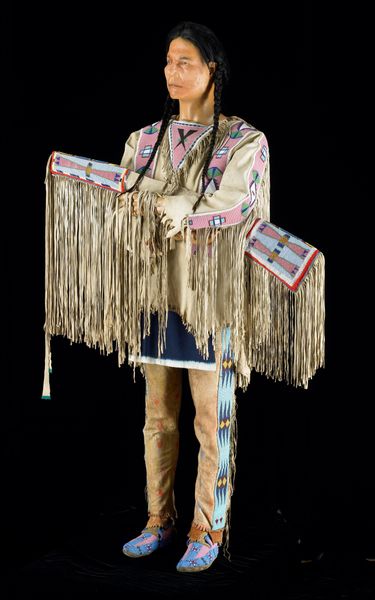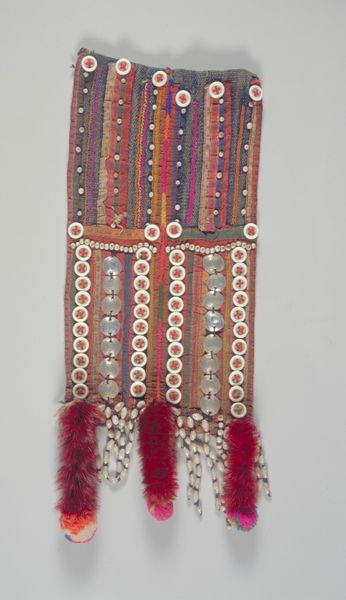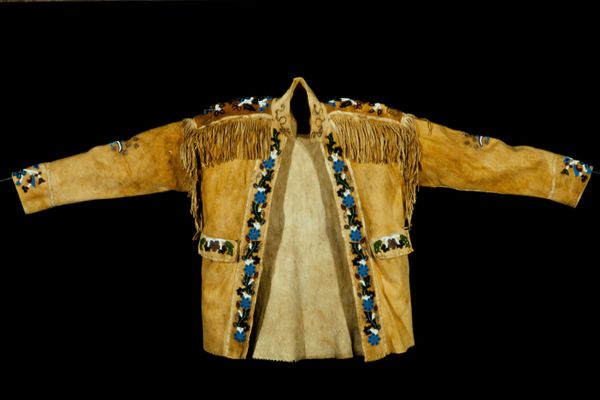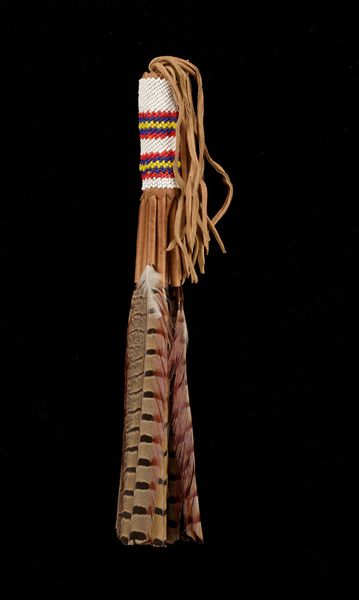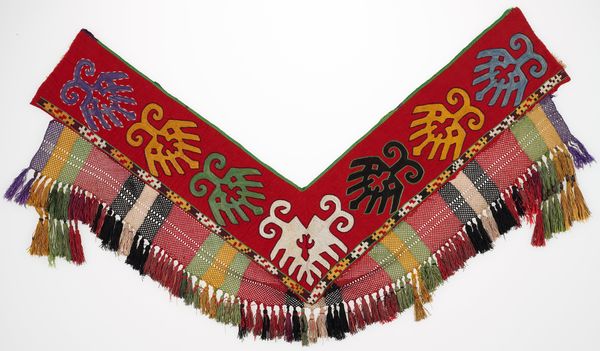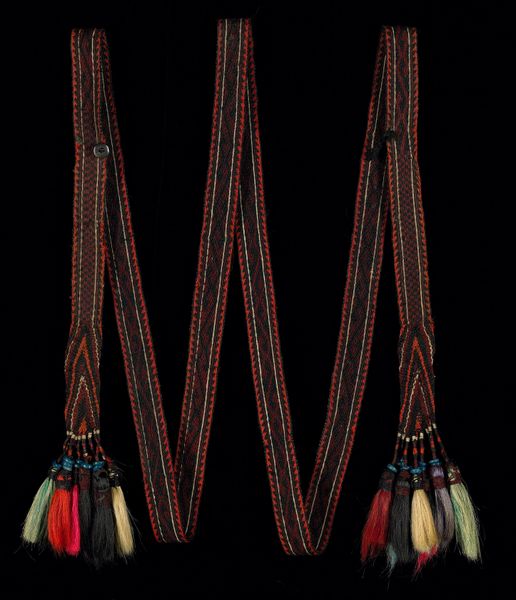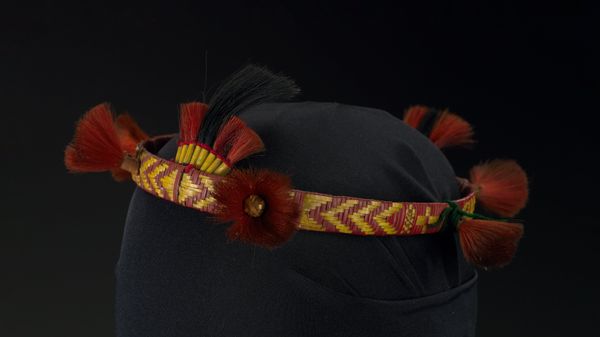
textile
#
textile
#
beaded
#
indigenous-americas
Dimensions: 54 1/4 × 7 × 22 1/4 in. (137.8 × 17.78 × 56.52 cm) (approx.)
Copyright: Public Domain
This headdress was crafted by the Tsistsistas, or Cheyenne people, and its imposing height and eagle feathers speak of great honor and power. The feathers, most prominently, carry complex symbolism. For the Cheyenne, the eagle, soaring closest to the heavens, becomes a potent symbol of spiritual connection and bravery. Note how each feather is carefully placed, its mere presence an embodiment of specific deeds or honors earned. The feathered headdress reminds me of winged helmets found in ancient Greek and Roman art, emblems of speed, power, and divinity. Yet, while those wings alluded to the swiftness of Mercury or the martial prowess of Roman soldiers, here, among the Cheyenne, the feathers are deeply interwoven with the wearer’s identity, their life experiences, and the sacred relationship with the natural world. It is a powerful visual assertion of an individual’s journey, echoing through time, taking new forms with shifting cultural meanings.
Comments
minneapolisinstituteofart almost 2 years ago
⋮
This headdress is the gift of Jack Garcia, a Lakota descendant of Long Wolf, who led Lakota, Cheyenne, and Arapaho warriors in the victory against General George Custer at the Battle of Little Bighorn, in 1876. Created by a Tsistsistas or Lakota artist, it is a symbol of power, leadership, and generosity. In this same spirit of Lakota generosity, the Garcia family gave the headdress to Mia for visitors to admire and appreciate. At its installation, a Lakota medicine man blessed the object with the family.
Join the conversation
Join millions of artists and users on Artera today and experience the ultimate creative platform.
